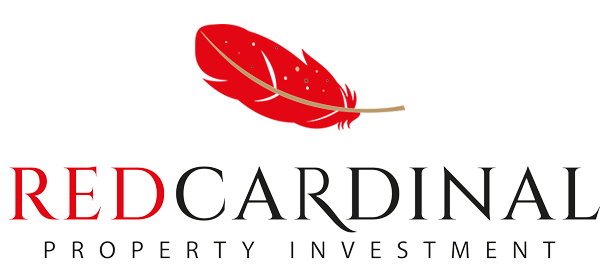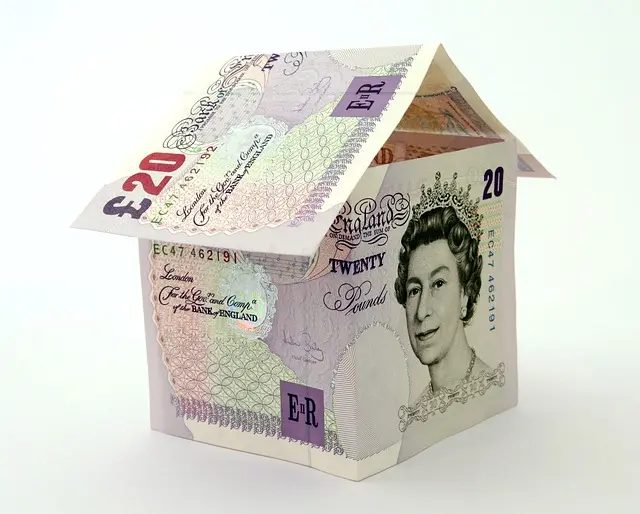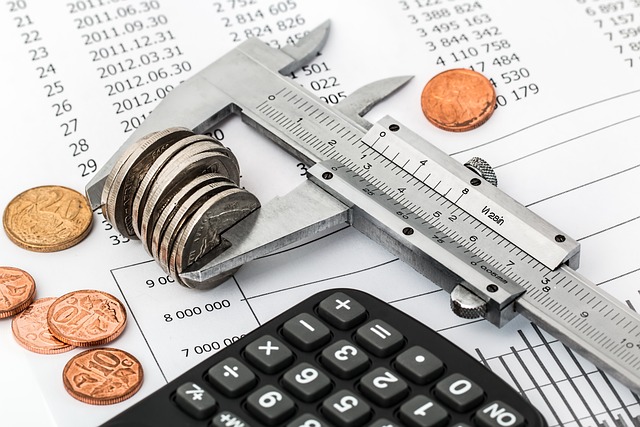Crucial Property Metrics: Empowering Investors for Success
If you’re looking to invest in real estate, the essential property metrics for investors is crucial for making informed decisions. Whether you’re a seasoned investor or just starting out, knowing how to calculate metrics like cap rate, ROI, GRM, DSCR, and cash flow can help you identify profitable investment opportunities and mitigate risks. In this guide, we’ll break down these essential property metrics for investors and provide examples of how to use them in your investment analysis.
Cash Flow Analysis
Cash flow analysis is a critical calculation that helps property investors determine the amount of cash generated by a property investment over a given period. It involves subtracting all the costs associated with owning and managing a property from the rental income it generates. The resulting figure is the net cash flow, which can either be positive or negative. Positive cash flow is crucial as it ensures that the investment generates enough revenue to cover expenses, and potentially earn a profit.
Capitalization Rate
Cap rate is another critical calculation used by property investors to assess the profitability of a property investment. It is calculated by dividing the net operating income of a property by its current market value. The result is expressed as a percentage, and the higher the cap rate, the more attractive the investment. Cap rate is useful in comparing the relative value of different properties in a market and determining their potential returns.
Return on Investment: An Essential Property Metric for Investors to Measure Profitability
ROI is a simple yet powerful calculation used to measure the performance of an investment. It represents the profit or loss generated by an investment relative to the amount invested. To calculate ROI, divide the net profit generated by the investment by the total cost of the investment. ROI is useful in determining the overall effectiveness of a property investment and can help investors identify opportunities for improvement.
Gross Rent Multiplier: An Essential Property Metric for Investors to Evaluate Investment Potential
GRM is a calculation that provides a quick estimate of the value of a property relative to its rental income. It is calculated by dividing the property’s market value by its annual rental income. The resulting figure shows the years to pay off the property’s market value with rental income. GRM assesses potential property value but shouldn’t be the sole criterion for investment decisions.
Debt Service Coverage Ratio
DSCR is a critical calculation used by lenders to evaluate the risk of financing a property investment. It represents the ratio of the property’s net operating income to its annual debt service (i.e., mortgage payments). A DSCR of less than one indicates that the property generates insufficient cash flow to cover its mortgage payments, while a DSCR of more than one indicates that the property generates enough cash flow to meet its obligations. A high DSCR can help investors secure more favourable financing terms.
Cash Flow Analysis An Essential Property Metric for Investors
Cash flow analysis is a fundamental concept in property investment, and it refers to the calculation of the net cash inflow or outflow generated by a property investment. In this article, we will define cash flow analysis, explain how to calculate it and discuss the importance of positive cash flow.
Definition of Cash Flow Analysis: An Essential Property Metrics for Investors
Cash flow analysis calculates the cash flow in and out of an investment, including rental income and expenses. It provides a net cash flow figure, which can be positive or negative, indicating profitability or loss.
How to Calculate Cash Flow: An Essential Property Metrics for Investors to Assess Profitability
To calculate cash flow, you need to consider all the revenue generated by the property investment, such as rental income, and subtract all the expenses incurred in owning and managing the property. These expenses include mortgage payments, property taxes, insurance, repairs, and maintenance costs. The resulting figure represents the net cash flow generated by the property investment over the specified period.
For example, if a property generates rental income of £10,000 per annum and incurs expenses of £7,000 per annum, the net cash flow would be £3,000 per annum.
Importance of Positive Cash Flow in Property Metrics for Investors
Positive cash flow is essential in property investment as it provides investors with a reliable source of income and helps them to cover all expenses related to the investment. It also enables investors to reinvest their profits into the property, further enhancing its value and generating additional revenue. Positive cash flow is a key factor in ensuring that property investments are financially sustainable in the long term.
Furthermore, positive cash flow provides a safety net for investors in case of unexpected expenses or market downturns. In times of economic uncertainty, properties with positive cash flow are less vulnerable to financial shocks as they can continue generating income to cover expenses and maintain the value of the investment.
Cap rate is a common metric used in real estate investment to evaluate the profitability and value of an investment property. It is an essential tool for investors looking to make informed decisions about buying or selling properties. In this article, we will define cap rate, explain how to calculate it, and discuss the importance of cap rate in assessing investment properties.
Capitalization Rate
Cap rate, short for capitalization rate, is a ratio that compares a property’s net operating income (NOI) to its current market value. It is a way of expressing the potential return on an investment property based on the income it generates. The cap rate is expressed as a percentage and represents the expected annual return on investment for a particular property.
How to Calculate Cap Rate: An Essential Property Metrics for Investors to Determine Investment Potential
To calculate the cap rate of an investment property, you need to divide its NOI by its current market value. The formula for cap rate is:
Cap Rate = Net Operating Income / Property Value
The property generates annual income after subtracting all operating expenses, such as maintenance, property taxes, insurance, and property management fees. This annual income is known as the net operating income (NOI).
For example, if a property generates an NOI of £30,000 per year and has a market value of £500,000, the cap rate would be:
Cap Rate = £30,000 / £500,000 = 6%
This means that the property generates a 6% annual return on investment.
Importance of Cap Rate in Assessing Investment Properties
Cap rate is a critical metric in real estate investment because it provides a quick and simple way to assess the potential return on investment for a property. A higher cap rate indicates a higher return on investment, while a lower cap rate indicates a lower return on investment.
Cap rate is also useful in comparing different investment properties, as it allows investors to evaluate properties based on their expected return on investment. It is important to note that cap rate should not be the only factor considered when evaluating a property, as other factors such as location, condition, and market trends also play a significant role in determining its value.
In addition, cap rate can help investors determine the optimal price to pay for an investment property. If the cap rate for a property is lower than the market average, it may not be a good investment, and the investor may need to negotiate a lower price. Conversely, if the cap rate is higher than the market average, it may be a good investment opportunity, and the investor may be willing to pay a higher price.
In summary, cap rate is a crucial metric in real estate investment, providing investors with a quick and simple way to evaluate the potential return on investment for a property. While cap rate should not be the only factor considered when evaluating a property, it is an essential tool in making informed investment decisions.
Return on Investment
Return on investment (ROI) is a critical metric used by investors to assess the profitability of an investment. It is a measure of the return generated by an investment compared to its cost. In this article, we will define ROI, explain how to calculate it, and discuss the importance of ROI in evaluating investment performance.
Definition of ROI
ROI is a financial metric that measures the profitability of an investment. It is calculated by dividing the net profit of an investment by its cost and expressing the result as a percentage. The formula for calculating ROI is:
ROI = (Net Profit / Cost of Investment) x 100%
The net profit is the total income generated by the investment minus all expenses, including taxes, maintenance, and management fees. The cost of investment includes the purchase price and any additional costs incurred, such as renovation expenses and closing costs.
How to Calculate ROI
To calculate the ROI of an investment, you need to determine the net profit and cost of the investment, as described above. Once you have these values, you can plug them into the formula for ROI and calculate the percentage.
For example, suppose you purchased a rental property for £500,000 and incurred £50,000 in renovation expenses. After one year, the property generated a net profit of £30,000. To calculate the ROI, you would use the following formula:
- ROI = (Net Profit / Cost of Investment)
- x 100% = (£30,000 / £550,000)
- x 100% = 5.45%
This means that the ROI for the investment was 5.45%, which represents the return generated by the investment in one year.
Importance of ROI in Evaluating Investment Performance: An Essential Property Metrics for Investors
ROI is an essential metric in evaluating investment performance because it provides investors with a clear understanding of the return generated by their investment. It allows investors to compare the profitability of different investments and determine which investment is the most profitable.
ROI is also useful in determining the optimal price to pay for an investment. By calculating the ROI, investors can determine the expected return on investment for a particular investment and compare it to the cost of the investment. If the ROI is higher than the cost of investment, the investment may be a good opportunity. Conversely, if the ROI is lower than the cost of investment, it may not be a good investment opportunity.
In addition, ROI can help investors identify areas for improvement in their investment strategy. If the ROI is lower than expected, investors can identify and address the factors that are negatively impacting the return on investment. This may include reducing expenses, increasing rental income, or improving the property’s condition.
Gross Rent Multiplier
When it comes to property valuation, there are various calculations that real estate investors use to determine the potential profitability of a property. One of these calculations is the Gross Rent Multiplier (GRM). In this article, we will define what GRM is, how to calculate it, and the importance of using GRM in property valuation.
Definition of GRM
Real estate investors use Gross Rent Multiplier (GRM) as an investment analysis metric to measure the ratio between a property’s purchase price and its gross rental income. It is a quick way to estimate the value of an income-producing property based on its potential rental income.
How to calculate GRM
To calculate GRM, you need to divide the property’s purchase price by its gross annual rental income. The formula is simple: GRM = Property Price / Gross Annual Rent.
For example, if a property is priced at £500,000 and its gross annual rental income is £80,000, the GRM would be 6.25 (500,000 / 80,000).
Importance of GRM in property valuation: GRM is an important metric in property valuation because it allows investors to quickly determine the value of a property based on its rental income. By using GRM, investors can compare the value of different properties and make informed decisions about which properties are worth investing in.
GRM is particularly useful when evaluating multi-unit properties such as apartment buildings, where there may be several rental units generating income.
To provide a more accurate representation of the property’s value, property investors use the GRM calculation, which takes into account the total rental income generated by all the units.
To provide a better understanding of a property’s profitability, investors can use GRM with other valuation metrics. Using cap rate and cash flow analysis alongside GRM offers a complete picture of the property’s financial potential. By examining all metrics together, investors can make informed decisions on whether to invest in the property or not. This comprehensive approach helps investors to minimize risk and maximize returns.
Understanding Debt Service Coverage Ratio: An Essential Property Metrics for Investors
One of the primary concerns of real estate investors is financing their investment properties. To secure financing, investors must demonstrate their ability to generate sufficient income to pay off their debts. This is where the debt service coverage ratio (DSCR) comes in. DSCR is a crucial financial ratio that lenders use to evaluate an investor’s ability to repay their debts.
Definition of DSCR
The debt service coverage ratio (DSCR) is a financial metric that measures an investor’s ability to generate enough cash flow to cover their debt obligations. Additionally, it represents the amount of cash available to cover interest and principal payments on outstanding debt. Lenders often use this ratio to determine whether a borrower has enough income to cover their loan repayments.
How to Calculate DSCR
To calculate DSCR, you need to divide the property’s net operating income (NOI) by its total debt service. The formula is as follows:
DSCR = NOI / Total Debt Service
Net operating income (NOI) refers to the property’s annual income minus operating expenses but before debt service payments. Total debt service includes all debt obligations, including interest and principal payments.
Importance of DSCR in Securing Financing: Lenders use DSCR to assess the risk of lending money to a borrower. A DSCR of 1.0 means that the investor has just enough cash flow to cover their debt obligations.
A DSCR of less than 1.0 shows insufficient cash flow to cover debt payments. Lenders usually require a minimum DSCR of 1.2, giving investors a 20% cushion to cover their debt obligations.
A higher DSCR indicates that the borrower can cover their debt payments more easily, making them a lower risk for lenders. Lenders are more likely to offer favourable interest rates and loan terms to investors with a higher DSCR.
In summary, DSCR is a crucial financial metric that investors must understand to secure financing for their investment properties. By calculating DSCR, investors can determine their ability to generate enough cash flow to cover their debt obligations and demonstrate to lenders that they are a low-risk borrower.
Conclusion
Property investment is a lucrative way to grow your wealth, but it comes with its own set of challenges. One of the biggest challenges is making informed investment decisions based on reliable data. To address this challenge, property investors use several key calculations to evaluate the potential of an investment property. In this piece, we will recap the five essential property metrics for investors we have discussed, and highlight the importance of using them to make informed investment decisions.
Recap of the Five Essential Property Metrics for Investors:
Cash Flow Analysis
Cash flow analysis helps investors determine whether an investment property will generate positive or negative cash flow. This calculation takes into account all income associated with the property. It also considers expenses such as mortgage payments, property taxes, and maintenance costs.
Capitalisation Rate: An Essential Property Metrics for Investors to Evaluate Property Value
Investors widely use cap rate to assess the potential return on investment of a property. Additionally, the metric considers the net operating income (NOI) of the property and the property value. Furthermore, to calculate the cap rate, investors divide the NOI by the property value and express the result as a percentage.
Return on Investment
ROI is a measure of the profitability of an investment property. It takes into account the total amount of money invested and the total return generated by the investment. Furthermore, to calculate ROI, you divide the total return by the total investment, resulting in a percentage.
Gross Rent Multiplier
GRM is a simple calculation that helps investors determine the potential value of a property based on its rental income. It is calculated by dividing the property value by the gross annual rental income.
Debt Service Coverage Ratio
Lenders use DSCR to assess a borrower’s ability to repay a loan, making it an important metric. DSCR takes into account the net operating income of the property and the total amount of debt payments due. The metric is expressed as a ratio, calculated by dividing the NOI by the total debt payments. Furthermore, DSCR helps lenders make informed decisions about loan approvals and interest rates.
Importance of Using These Calculations in Essential Property Metrics for Investors
Using these essential property metrics for investors can help investors make informed investment decisions.
Investors can determine whether a property is worth investing in by evaluating its cash flow, cap rate, ROI, GRM, and DSCR. Additionally, investors can compare the potential of different investment properties. They can then choose the property that best fits their investment goals and risk tolerance.
Moreover, by utilizing these calculations, investors can also detect potential risks associated with an investment property. For instance, a property with a negative cash flow may require constant investments to cover expenses, leading to a decrease in the overall profitability of the investment. By recognizing these risks, investors can make informed decisions, hence avoiding making costly mistakes.
In summary, property investment is a complex process that requires careful evaluation of various factors. Investors can use the essential property metrics for investors calculations to evaluate the potential of an investment property. These calculations can help investors make informed investment decisions. By analysing a property’s cash flow, cap rate, ROI, GRM, and DSCR, investors can minimize the risk. They can also maximize returns.
Find out more about what’s happening in the property market in our News column.









